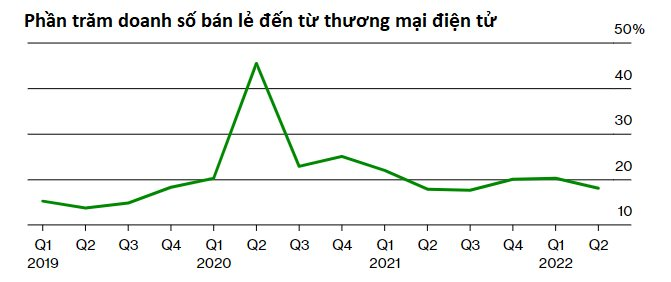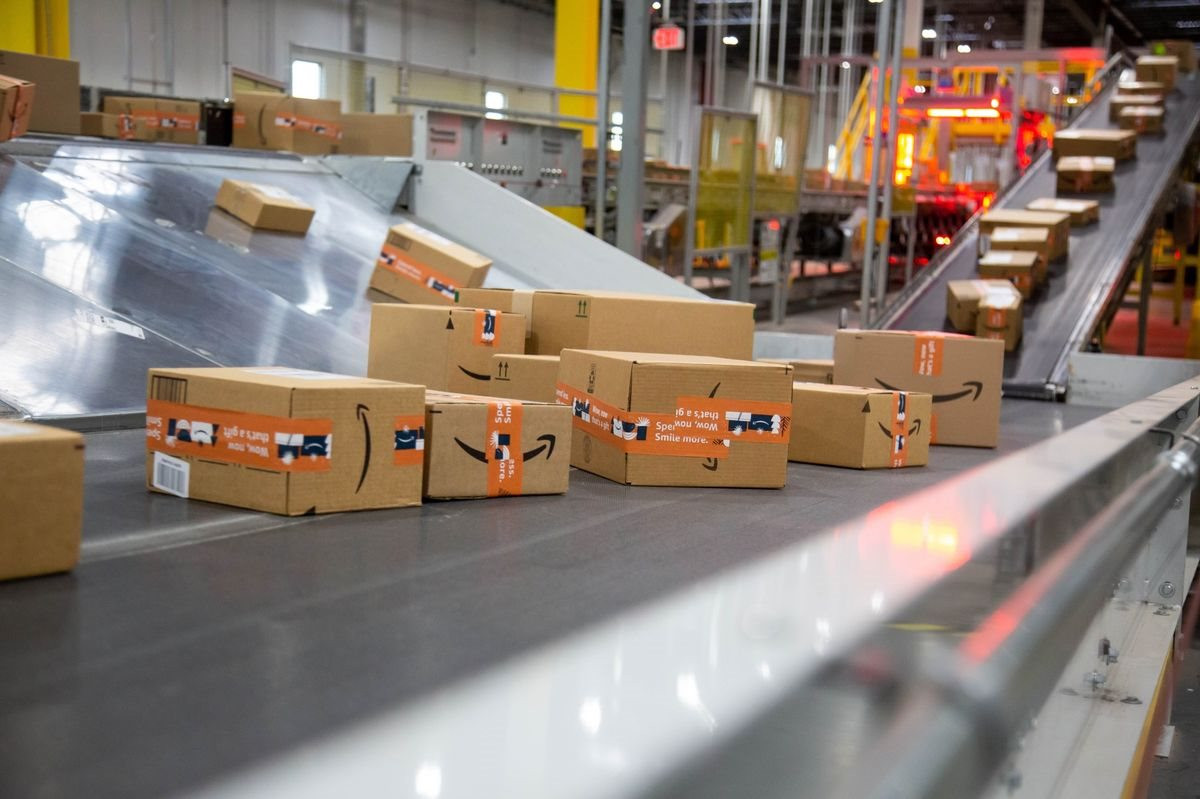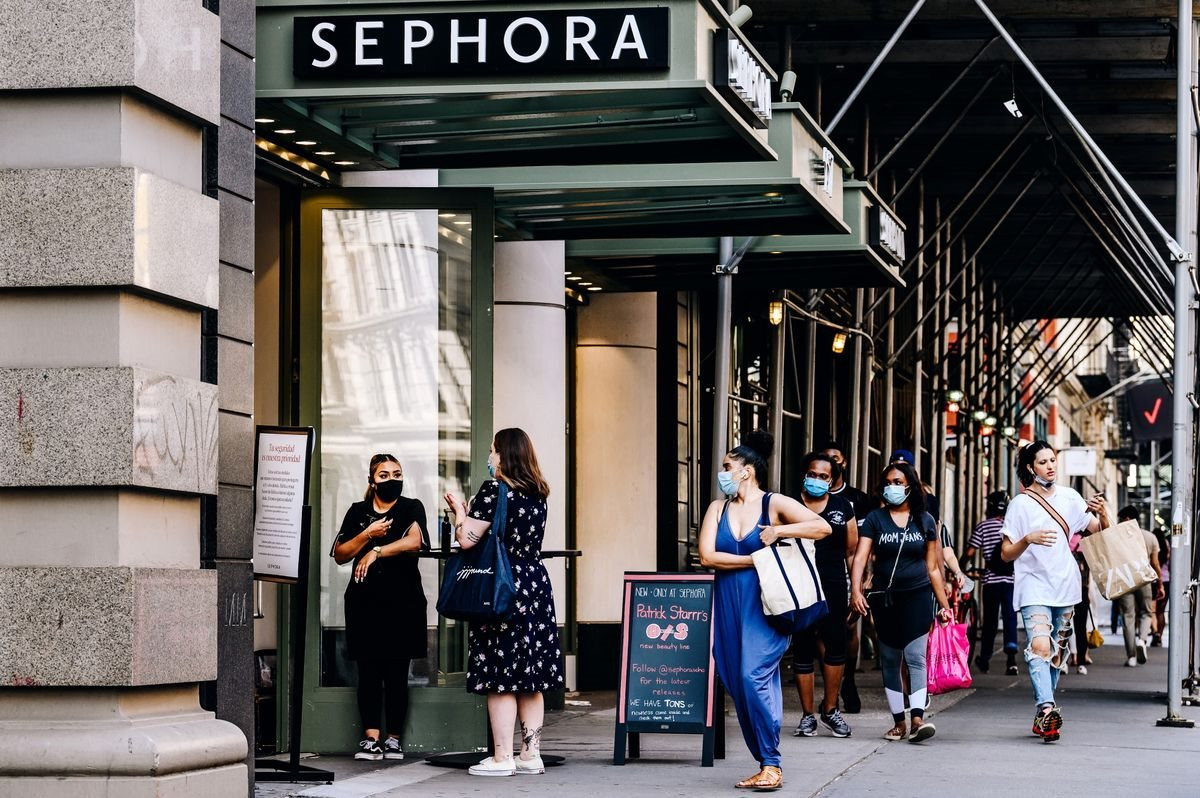The wave of e-commerce is receding?
- Tram Ho
Will the pandemic change the way we shop forever? This question was asked at the beginning of 2020, when the COVID-19 epidemic slowed the growth of a series of retailers and accelerated the growth of the internet. However, after online shopping experiences become familiar and easy, consumers tend to return to physical stores. Why is that so?
According to Bloomberg, in the US, the wave of e-commerce has receded. In some categories, such as clothing, the percentage of online sales has returned to pre-pandemic levels, according to an analysis by UBS. Before that, during the last five quarters, online growth led to sales of the entire retail industry, according to the US Census Bureau.
The S&P 500 index fell 25% in the first nine months of this year, as stocks tied to e-commerce took a hit. The 32% drop in Amazon shares caused the company’s market capitalization to “evaporate” half a trillion dollars. Spotify shares plunged 80% and lost $143 billion, while shares of European online retailers Asos Plc and Boohoo Group Plc fell more than 70%.
“ People thought we were going to be far in the future, but the funny thing is, that theory isn’t right ,” said Ed Yruma, retail analyst at Piper Sandler.

The downturn of e-commerce is partly due to the situation of the general economy. Inflation is at a four-decade high and the US Federal Reserve has no choice but to sharply raise interest rates. Many economists predict that the United States will soon fall into a recession. The latest data, however, shows that overall consumer spending has not fallen: Excluding gasoline, retail sales rose 0.8% in August.
In fact, money is still being evenly distributed to some services, such as entertainment and travel, thereby reversing the trend of heavy goods in the past 2 years. Apparently, many of the retail giants didn’t read the market properly because they thought previous patterns of lockdowns due to COVID-19 would continue.
In addition, inflation may also cause some consumers to become more frugal and limit online shopping in the short term. Traditional shopping is still especially favored because users do not have to pay extra shipping costs.
Before the COVID-19 outbreak, the online retail market share in the US grew by about 1% per year since the mid-2010s. In the second quarter of 2020, during the peak of the epidemic, this number suddenly increased to 16, 4% from 11.9% – an unprecedented leap for the US economy. In the following quarters, e-commerce growth continued to maintain and led most retailers to believe that online shopping had become a trend.

However, this trend did not last long. Amazon is currently scaling back its delivery operations, while other companies, such as Shopify and Wayfair, lay off a bunch of redundant workers to save costs.
“ It was clear that the bet didn’t work out ,” said Shopify CEO Tobi Lutke in a letter to employees in July. “ Things are still going steady, but that’s no longer a jump jump. meaningful leap in the next five years .”
According to William Brown, general manager of e-commerce at Grupo Unicomer, a retailer and lender in the US and elsewhere, the retail industry has misunderstood the explosion in online shopping behavior. The post-pandemic revenge-spending sentiment has sent the wrong signal.
“ Some companies think this is going to be the new normal, but this is not the case ,” said William Brown.
In some other markets where e-commerce is relatively new, such as Latin America, profits from online shopping are still growing. Consumers, after having access to new financial options, are more comfortable spending than before.
“ The decline you are seeing in the West is not going to happen in emerging markets, ” said Nirgunan Tiruchelvam, an analyst at Aletheia Capital.

Amazon is currently scaling back its delivery operations, while other companies, such as Shopify and Wayfair, lay off a bunch of redundant workers to save costs.
For most of the rest of the markets, however, online sales growth has returned to pre-pandemic levels, or even worse. Next, the British retailer with more than 60% of its revenue coming from e-commerce, said in August that “online growth shows signs of stopping” and blamed the reversal in pandemic trends.
“ People underestimate the power of old habits ,” said Wendy Wood, a professor of psychology and business at the University of Southern California.
It is these old habits that have brought millions of Americans back to the malls. For them, in-person shopping is exciting because it provides more of a real-world experience.
“ Old habits work for us. And we would repeat them very easily ,” said Wendy Wood.
This is true for Katerina Cohee, a mother of two from Fallbrook, California. She returned to the stores immediately after the pandemic to hunt for discounts. “I like to hold things in my hand and rest assured that everything will fit ,” she says. “ I only shopped on Amazon once .”

After online shopping experiences become familiar and easy, consumers are returning to physical stores.
According to location analytics firm Placer.ai, a study of the 10 largest retail chains in the US found that store visits increased by a total of 2.7% over the same period last year.
Warby Parker, one of the few publicly listed brands, says the percentage of revenue that comes from e-commerce has dropped back to pre-pandemic levels. In turn, the company is planning to increase the number of physical stores by 25% by the end of the year.
“ The pandemic has changed shopping habits, but how it will change is not entirely clear. It seems the mindset of consumers right now is still: ‘I want to get out of the house right now ,’ retail analyst Yruma said.
By: Bloomberg
Source : Genk
